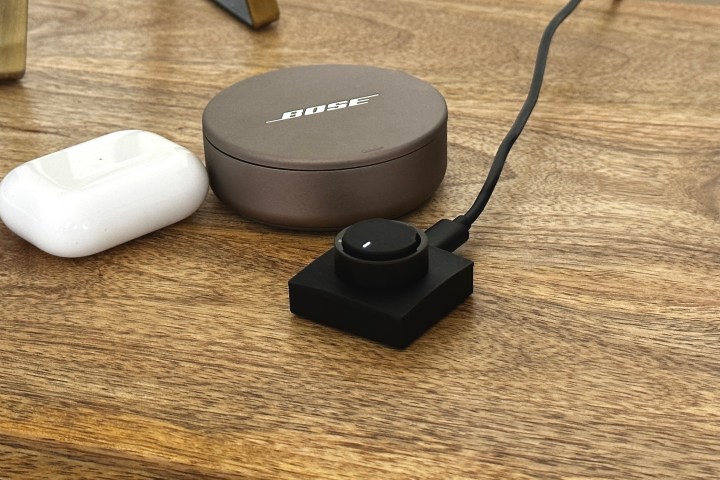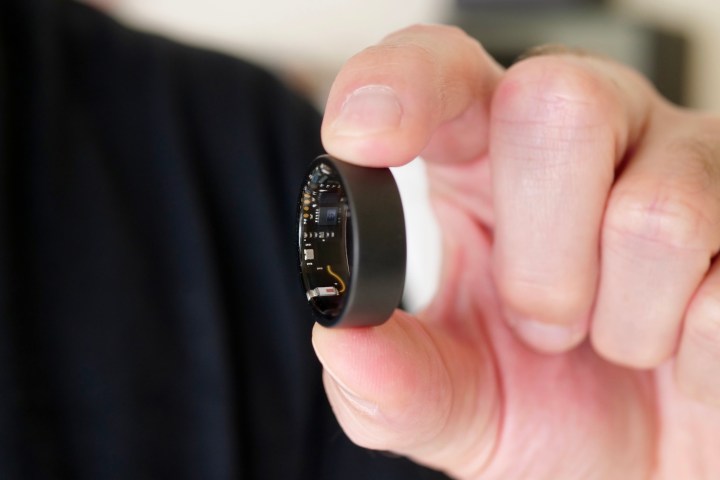
“We wanted to chat about what’s coming in the near future, as well as some new product launches that are happening over the next couple of months, which I think you’ll find really interesting. I wanted to give you a sneak peek into what’s coming.”
This was how Mohit Kumar, founder and CEO of Ultrahuman, started our conversation when I spoke to him over Zoom. And in doing so, he definitely had my attention. What followed was a fascinating glimpse at how the Ultrahuman Ring Air that I wore recently is only the start for this four-year-old company.
15 new product releases

Ultrahuman has captured a lot of attention with the Ring Air smart ring, and it has become a top alternative to the popular Oura Ring. While Oura seems to be concentrating more on partnerships to increase sales and mindshare at the moment, Ultrahuman is going all-out with new and unusual hardware and software features.
“Half of our product lines in 2024 are going to be our own new hardware,” Kumar said. “Overall, we have 15 different product releases, seven of them hardware.”
Obviously, it would be impossible to go through all 15 (much as I may have wanted to), so we focused on a handful of the biggest and most innovative upcoming developments — each of which separates Ultrahuman from the competition in exciting ways.
At-home blood tests

“We want to create one central platform that gives you access to all your health markers, scores created on the basis of these markers, and also where you can form your own opinion or view of your health on the basis of these markers,” Kumar explained about the company’s mission. Currently, you can track markers based on sleep, heart rate, heart rate variability (HRV), temperature, and more. There’s also a glucose monitor called the Ultrahuman M1 that’s available internationally, and it will come to the U.S. in 2024.
“We’re looking to add more markers as we go along, even going to the extent of adding blood markers,” Kumar revealed about the future plans.
This is the first new feature we discussed. It’s called Blood Vision, and it will add blood test data to the Ultrahuman app. But instead of forcing you to go and get a blood test or order an at-home test, then add the data manually yourself, Ultrahuman will take all this effort out of the process.
It’s a fascinating feature, unlike any we’ve seen before from a health and lifestyle wearable.
A phlebotomist will come to your home, take a sample, return it to the lab, and the results will automatically appear in the app for you. Blood Vision launches in India during December, and will arrive in the U.S. early next year. Kumar explained how it will work.
“In India, it will be possible to book a phlebotomist to arrive at your home in 60 minutes to do a blood draw, then you will get your results in six hours. In the U.S., you will be able to book a slot with 24 hours notice, so the phlebotomist will arrive the day after. They are gold standard tests, while the at-home tests have have a lot of limitations due to the reagents used. You’re looking at about 560 markers for the at-home test, but in the gold standard test, we’re looking at more than 1,000 health markers.”
The tests will cover the core markers like insulin, glucose, and homocysteine, according to Kumar, but will also take into account specific markers that are relevant to gender and ethnicity. Ultrahuman will partner with other companies for the on-demand tests, and more information on that will come closer to the launch. It’s a fascinating feature, unlike any we’ve seen before from a health and lifestyle wearable, and it has the potential to provide considerable and unique insights into your body, health, and performance over time.
An amazing light sensor

Blood Vision is a software feature, with alterations made to the app’s algorithms to interpret the results, but what about the hardware itself? The first new hardware-related feature coming from Ultrahuman is a sensor that will be integrated into future versions of the Ring.
“One big change that’s coming in future versions of the ring is a patented light detection sensor, which will understand what sort of spectrum of light that you’re seeing, and it will map that back to show how much vitamin D generation is actually happening in your body,” Kumar said, before going on to explain in more detail how it will work.
“There are various ultraviolet light bands, and it’s the UVB band that’s responsible for vitamin D generation in the body. The problem is a lot of people end up getting a lot of UVA and UVC, but not a lot of UVB. So even if they get sun exposure, they don’t get the right kind. The other thing is that most people don’t get enough sun exposure, or they don’t get it at the right time.”
The light sensor and Ultrahuman’s algorithm will help you better understand the best times to be out in the sun, and track the kind of sun exposure you have. Kumar also said it will potentially measure blue light too. All this information could prompt lifestyle changes that you wouldn’t realistically be able to make without access to such data. Ultrahuman’s patented light sensor is still in development, and the expectation is it will launch later in 2024.
Materials we’ve never seen on a smart ring

One of the downsides of the current Ultrahuman Ring Air is the long-term comfort level. I found the sharp edges a little uncomfortable compared to the rounded Oura Ring — something my friend also noted when he wore a Ring Air for several weeks. Ultrahuman controls all aspects of design and manufacturing, and is working hard on not only optimizing the current Ring Air, but also experimenting with other materials that may transform the way we think about smart rings entirely.
“The edges of the ring will be more rounded and more comfortable to wear, and the width will be slightly smaller as well,” Kumar said about future plans for the existing ring design. He then went on to talk about additional models.
“A lot of people have come to us and said they want to have a heavier ring, so we have been looking at using zirconium for a more solid, rugged ring. On the flip side, we’re also looking at launching something called the “helium”, which will be made from a different alloy that is significantly lighter than titanium, but probably even stronger.”
Experimenting with other materials may transform the way we think about smart rings entirely.
While these alterations are exciting, perhaps the most innovative new hardware development Kumar talked about was a flexible version, which he described as more of a finger band. It will be made mostly from silicone, potentially making it more comfortable and more durable than any metal smart ring. It’s not without its engineering challenges, though.
“You need to make circuit boards and batteries flexible, but I think that in our case, we already have that optimization in place. That’s not a problem. There may be some other limitations. We can’t use the 24mAh battery from the current titanium Ring Air, so may not achieve the same level of battery power efficiency.”
“An 18mAh battery would be the trade,off, but there’s a lot of upside,” Kumar continued. “What’s also challenging is that how does it handle rough surfaces, and also how to maintain an inner transparent band because you need to pass the LED light through. So that’s the one that we are iterating upon, and there are some really good options with different grades of silicone. I think we are getting closer and closer to the answer.”
More coming in 2024
This is only the beginning of Ultrahuman’s plans for 2024, which also include more in-depth software features, changes to the app experience to highlight a unified view of your data, and even the release of a companion device that monitors the environment around you.
“We are a small team, and we are deeply obsessed about the products” Kumar concluded, before adding: “The one thing to expect from us is that we will be extremely bold, and experiment creatively in the space.”
Based on what I learned during my conversation, this may even be an understatement. The Ultrahuman Ring Air costs $349 and does not require an ongoing subscription to use. For more details, you can read our in-depth review of the Ultrahuman Ring Air.



